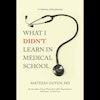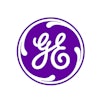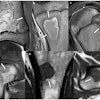
Interval breast cancers pose a thorny problem for clinicians and women alike, since they often manifest in more aggressive and deadly forms. At the recent virtual edition of ECR 2020, a number of researchers reported findings from clinical studies that investigated how to reduce the interval cancer rate -- and what technology best classifies interval cancers.
Digital mammography or DBT?
A team led by Dr. Kristin Johnson of Lund University in Sweden compared the performance of digital breast tomosynthesis (DBT) to that of digital mammography for classifying interval cancers. The study used data from the Malmö Breast Tomosynthesis Screening Trial (MBTST).
 Dr. Kristin Johnson.
Dr. Kristin Johnson.Overall, the trial compared one-view DBT to two-view digital mammography for breast cancer detection, enrolling 14,848 women between January 2010 and February 2015. Twenty-two interval cancers were identified via the Swedish Cancer Registry following the study; these cancers were classified by two breast radiologists as true negative, minimal sign (at most recent screening exam), or false negative.
Most of the interval cancers were found to be true negative on both digital mammography and DBT, but DBT did decrease the false negative rate, Johnson's group found.
| Digital mammography vs. DBT for identifying interval breast cancer | ||
| Interval cancer classification | Digital mammography | DBT |
| True negative | 46% | 46% |
| Minimal signs | 9% | 18% |
| False negative | 46% | 36% |
"[We] noted a slight shift from false-negative interval cancers on prior digital mammography to interval cancers with a minimal sign on prior DBT, which suggests a challenge of increased retrospective cancer visibility when introducing a more sensitive screening method," the team noted. "The numbers are, however, small and the result needs to be confirmed in larger samples."
 Dr. Per Skaane, PhD.
Dr. Per Skaane, PhD.In a related study, a group led by Dr. Per Skaane, PhD, of the University of Oslo in Norway assessed baseline screening exams of interval cancer, also comparing the performance of DBT and digital mammography, using data from the Oslo Tomosynthesis Screening Trial (OTST). The trial included 24,301 women and compared double reading digital mammography, digital mammography plus DBT, and consensus meeting to determine recall decisions.
Four radiologists reviewed baseline screening exams of 51 interval cancers identified during a two-year follow-up period, classifying findings as normal, nonspecific, or significant minimal signs or false negatives; they also scored the cancers using a five-point rating scale.
The overall interval cancer rate was 2.1 per 1,000 women screened. Skaane and colleagues found the following:
- Two interval cancers were identified in women who were recalled for reasons other than cancer.
- Of 14 interval cancers dismissed at consensus, five were identified on digital mammography and seven on DBT.
- Five interval cancers were considered to have potential detectable cancer on digital mammography, while 12 were found to be detectable on DBT -- which could have reduced the interval cancer rate from 2.1 to 1.6 per 1,000 women screened.
Skaane's group conceded that one of their study's limitations was that the screening exam batch was enriched with cancers. But DBT does appear to reduce the interval cancer rate.
"More interval cancers had the potential to be correctly detected at baseline DBT screening compared with digital mammography, probably due to both perception and characterization errors," the team concluded.
Can AI help?
 Dr. Kristina Lång.
Dr. Kristina Lång.Finally, another team from Lund University, this one led by Dr. Kristina Lång, investigated whether an artificial intelligence (AI) algorithm could reduce the interval cancer rate. Their study included 430 interval cancer screening exams found between 2013 and 2017; the algorithm assigned risk scores on a scale of 1 to 10, with 10 being the highest risk. The team also trained the algorithm to make recall recommendations using both 4% and 1% recall rate calculations.
More than 33% of the interval cancers had an AI risk score of 10, while 40% were scored between 1 and 7, the group found. As for the recall rates, the team found the following:
- 17% of interval cancers were included in the 4% recall rate calculation; of these, 74% were visible in retrospect.
- 6% of the interval cancers were included in the 1% recall rate calculation; 79% of these were visible in retrospect.
So could AI help reduce the interval cancer rate? Yes, the team concluded.
"The AI system was able to detect a substantial number of interval cancers on the prior screening exam," it wrote. "Applying an AI-derived recall rate recommendation for the most suspicious cases to, for example, a third reader or a consensus discussion might provide the means to help [radiologists] reduce the interval cancer rate."



















